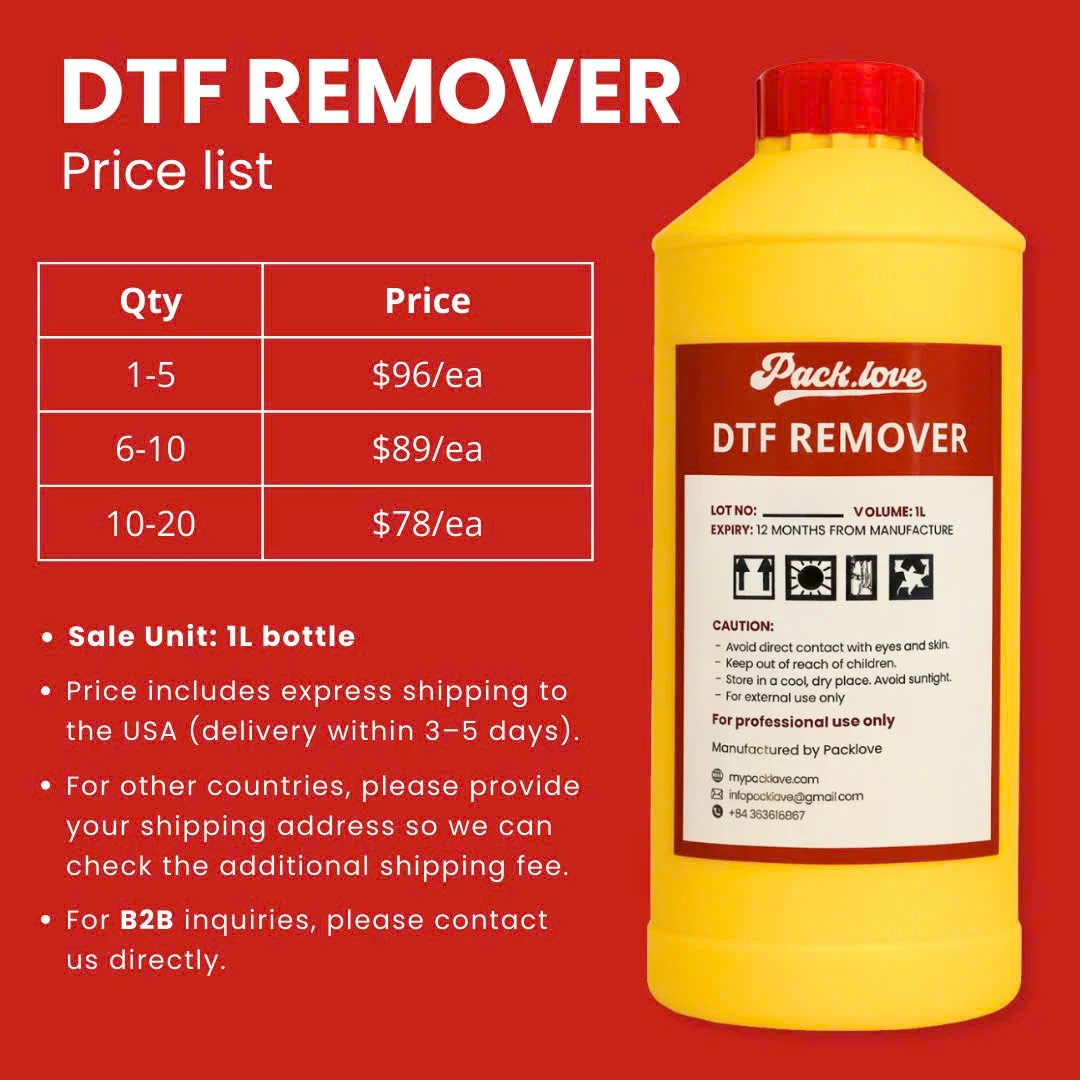What Is Bar Tacking: Key To Garment Strength And Longevity
This article offers a simple and easy-to-understand explanation of ‘bar tack stitches.’ These small but crucial stitches play a significant role in making clothes, bags, and other items strong and durable. By the end, you’ll understand what bar tacks are, their importance, and common places to find them, providing a useful insight into garment construction.
1. What exactly is a bar tack stitch?
1.1. Simple definition
A bar tack (also spelled ‘bartack’) is a series of small stitches sewn closely together to significantly reinforce a specific point on fabric. Its primary purpose is to prevent tearing at stress points and stop existing seams from unraveling. Think of it as a concentrated, thread-based reinforcement that holds a vulnerable area together, enhancing the product’s longevity by strengthening areas prone to high tension.
1.2. What it looks like
A bar tack typically appears as a short, dense line of thread, perhaps half an inch long or smaller, and may feel slightly raised. It can be formed by multiple straight stitches or a very tight, narrow zigzag stitch, repeated back and forth. The key characteristic is the high density of stitches in a small area.

2. Why is bar tacking so important? The purpose of this stitch
2.1. Making things super strong
The primary purpose of bar tacking is reinforcement. Manufacturers apply these stitches to high-stress areas on garments and accessories – points subjected to frequent pulling or movement. By distributing force over a concentrated stitched area, bar tacks prevent fabric from ripping and seams from bursting, significantly increasing the item’s structural integrity. It’s a small detail that makes a big difference in how long a product lasts.
2.2. Helping your items last longer
By reinforcing stress points, bar tacks directly contribute to an item’s durability and overall garment longevity. They prevent small tears from developing or worsening, allowing products to withstand more daily wear and tear. This focus on durability in manufacturing processes leads to higher quality items for the consumer.
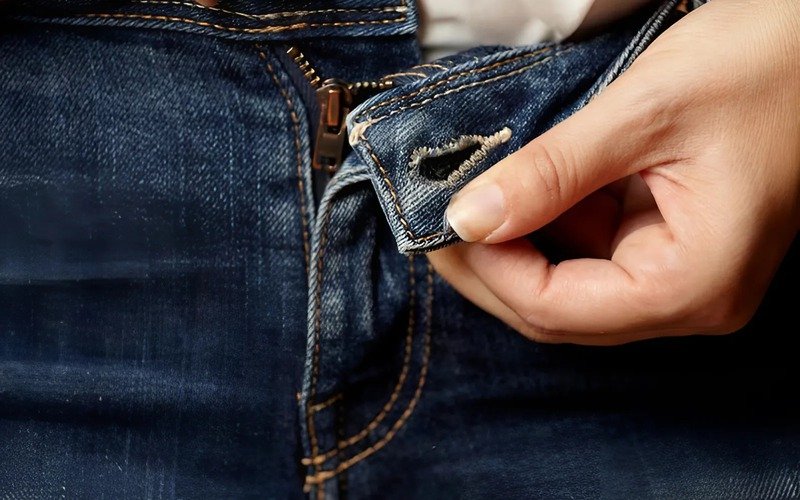
3. Where can you find bar tacks? Common examples
You can find bar tacks in many everyday items you use! They are especially common in places that need extra strength. Let’s look at some examples:
3.1. Jeans
Jeans are a classic example, as they endure significant wear. Look for bar tacks at:
- Pocket corners: Reinforcing the top corners of front and back pockets, areas frequently stressed by hands or contents.
- Belt loops: Securing belt loops to the waistband to prevent tearing under belt tension.
- Zipper fly: At the base of the zipper opening, a common point of strain.
3.2. Bags and backpacks
Bags and backpacks carry weight, so they need strong stress points.
- Straps and handles: Where shoulder straps or carry handles connect to the main body of the bag. These spots hold all the weight!
- Pocket openings: Around the edges of pocket openings that are used a lot, or near zippers on pockets.
Especially on outdoor gear like hiking backpacks, bar tacks are very important for strength.
3.3. Outdoor gear and workwear
- Tents: On tents, you might find them on loops for tent stakes or where door tie-backs attach.
- Heavy-duty clothes: On heavy jackets, work pants, or overalls, especially around pocket edges or loops for tools.
- General rough use gear: Any gear that is designed for rough use or to carry heavy things will often have bar tacks.
3.4. Other clothing
Bar tacks aren’t just for heavy-duty items. You can find them on other clothes too:
- Buttonholes: Look closely at the ends of buttonholes on shirts or jackets. A small bar tack there stops the fabric from tearing when you button and unbutton.
- Shirt plackets: Sometimes on the placket of a shirt (the strip of fabric where the buttons and buttonholes are).
- Other spots: Basically, they can be used in various other Location (Root Attribute) specific spots on clothing where a designer decides a little extra strength is needed.
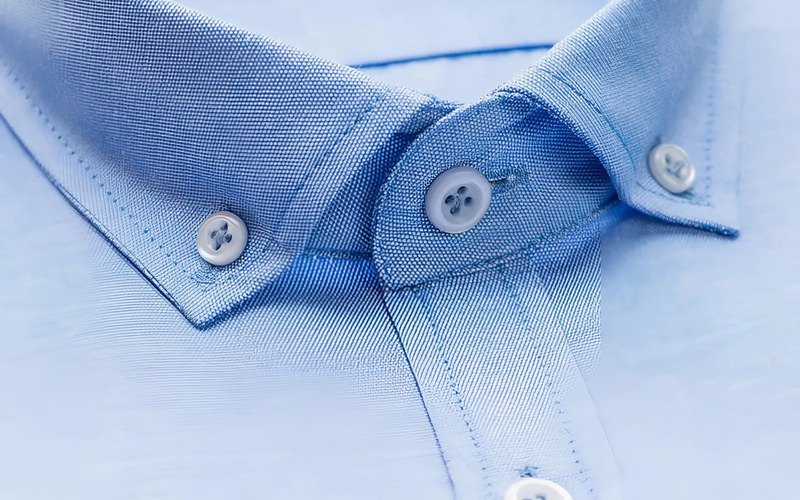
4. How are bar tacks usually made?
This part is just a quick peek to understand how bar tacks are made. It’s not a full sewing lesson! Most bar tacks are made using a specialized industrial ‘bar tacking machine,’ though some regular sewing machines also offer this function.
The machine rapidly sews numerous stitches—often a very short, narrow zigzag stitch—back and forth in one spot. The stitch length is minimal (e.g., 0.3-0.5mm) to create a dense, strong reinforcement. This helps make the bar tack dense and strong.
In factories, machines are preferred because they make bar tacks that are very consistent (all look the same and are strong), very fast, and very strong. Some people search for ‘how to do bar tacking on a sewing machine’ for home projects, but this guide is just about understanding what they are.
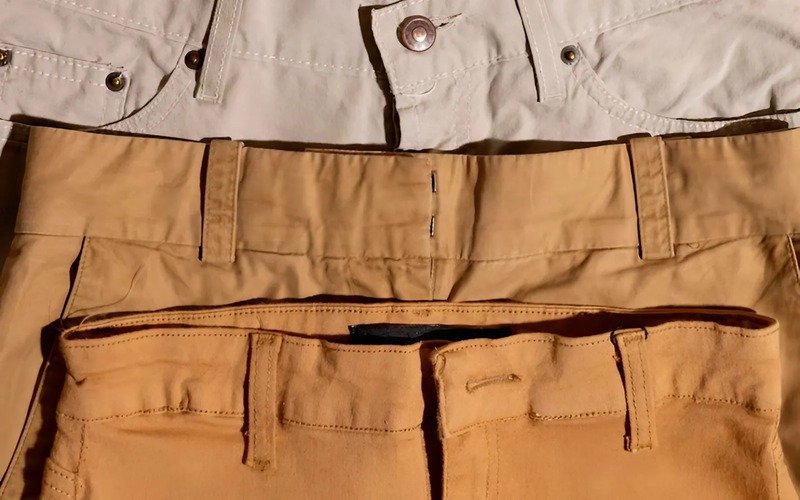
5. Bar tacks: A little sign of good quality
When you see bar tacks, especially in the places we talked about (like pocket corners or where straps attach), it’s often a little sign that the product is well-made and designed to be durable. It shows the manufacturer invested extra effort in reinforcing stress points, a hallmark of good garment construction. Understanding clothing quality involves looking for such details, as bar tacks are one of many textile reinforcement methods used by conscientious manufacturers.
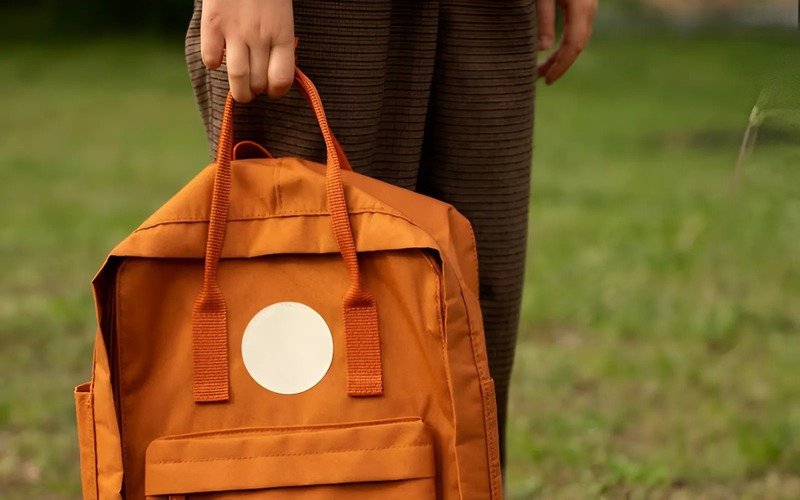
6. Bar tacks vs. other strong stitches
Bar tacks are great for making things strong, but they are not the only way! There are other reinforcement stitches too. For example, you might sometimes see something called a Box X stitch (a stitched square with an ‘X’ stitched inside it). It’s also very strong. This is just one example of related topics: other reinforcement stitches.
When comparing bar tack vs box x stitch strength, both are strong. But bar tacks are very popular because they give excellent strength for their small size and they look like a neat, straight line, which fits well in many designs. This is just to let you know there are other ways – we won’t go into a big comparison here.

7. Conclusion: Bar tacks are small but mighty
In conclusion, bar tacks are small yet powerful groups of stitches crucial for reinforcing stress points on apparel, bags, and gear. They enhance durability, extend the life of your items, and often signify quality construction. As one of many effective stitching methods, bar tacks truly are small but mighty. Keep an eye out for this valuable detail in the products you use.
8. Frequently asked questions (FAQs) about bar tacking
8.1. What is the main job of a bar tack?
Its main job is to make specific spots on clothes or other items much stronger. These are applied at stress points, and this reinforcement helps prevent them from tearing or the seams from coming apart easily.
8.2. Are bar tacks only for strength, or can they be for looks?
Bar tacks are mostly for strength. Sometimes, a bar tack can be sewn with a different colored thread to add a tiny design detail (like decorative bar tacks), but its main purpose is always to be strong and make the item last longer.
8.3. Can bar tacks be sewn by hand?
Yes, it is possible to sew bar tacks by hand, and people sometimes do this for small repairs or homemade projects (sewing bar tacks by hand for reinforcement). But in factories that make many items, machines almost always sew them because it’s faster, and every bar tack is very strong and looks the same.
8.4. Is a bar tack the same as a regular stitch?
No, a bar tack is different from a regular, simple stitch. A regular stitch is usually just one line of thread. A bar tack is a special group of many, many stitches packed very tightly together in a small area, which makes that spot much, much stronger than a single regular stitch.
Read more:
We hope this simple guide helped you understand bar tacks! At Packlove, we love helping brands show off their quality, from the construction of their products to their branding. If you have more questions about product details that show quality, or if you need help creating beautiful custom labels, tags, or packaging for your own products, please feel free to contact Packlove today! We’re always happy to help.






